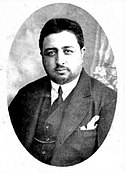Władcy Afganistanu
Królestwo Afganistanu (1709–1729)
Dynastia Hotaki
| # | Imię | Lata życia | Czas rządów | Rodzice | |||
|---|---|---|---|---|---|---|---|
| Urodzony | Zmarł | Od | Do | ||||
| 1 | Mir Wajs Chan | 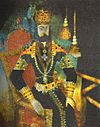 | 1673 | 1715 | 1709 | 1715 | Salim Khan Nazo Tokhi |
| 2 | Mahmud Chan | 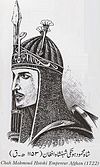 | 1679 Kandahar | 22 kwietnia 1725 Isfahan | 1717 | 22 kwietnia 1725 | Mir Wajs Chan Khanzada Sadozai |
| 3 | Aszraf Chan | 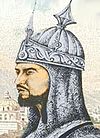 | ? | 1729 | 1725 | 1729 | Abdul Aziz Hotak ? |
Emirat Afganistanu (1747–1901)
Dynastia Durrani
| # | Imię | Lata życia | Czas rządów | Rodzice | |||
|---|---|---|---|---|---|---|---|
| Urodzony | Zmarł | Od | Do | ||||
| 1 | Ahmed Szah Abdali | 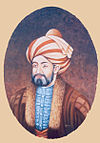 | 1723 Multan | 4 czerwca 1772 Kandahar | 1742 | 4 czerwca 1772 | Muhammad Zaman Khan Abdali Zarghuna Ana |
| 2 | Timur Szah Durrani | 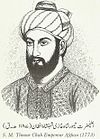 | 1748 Meszhed | 18 maja 1793 Kabul | 4 czerwca 1772 | 18 maja 1793 | Ahmed Szah Abdali Mimtta |
| 3 | Zaman Szah Durrani |  | 1767 | 1844 Ludhiana | 18 maja 1793 | 25 lipca 1801 | Timur Szah Durrani Maryam |
| 4 | Mahmud Szah Durrani |  | 1769 | 18 kwietnia 1829 | 25 lipca 1801 | 13 lipca 1803 | Timur Szah Durrani ? |
| 5 | Szudża Szah Durrani | 1780 | 5 kwietnia 1842 | 13 lipca 1803 | 3 maja 1809 | Timur Szah Durrani ? | |
| (4) | Mahmud Szah Durrani |  | 1769 | 18 kwietnia 1829 | 3 maja 1809 | 1818 | Timur Szah Durrani ? |
| 6 | Ali Szah Durrani | ? | ? | 1818 | 1819 | Timur Szah Durrani ? | |
| 7 | Ajub Szah Durrani | ? | ? | 1819 | 1823 | Timur Szah Durrani ? | |
Dynastia Barakzai
| # | Imię | Lata życia | Czas rządów | Rodzice | |||
|---|---|---|---|---|---|---|---|
| Urodzony | Zmarł | Od | Do | ||||
| 8 | Dost Mohammad Chan |  | 23 grudnia 1793 Kandahar | 9 czerwca 1863 Herat | 1818 | 2 sierpnia 1839 | Sarfraz Payinda Khan Zainab Begum |
Dynastia Durrani (przywrócona)
| # | Imię | Lata życia | Czas rządów | Rodzice | |||
|---|---|---|---|---|---|---|---|
| Urodzony | Zmarł | Od | Do | ||||
| (5) | Szudża Szah Durrani | 1780 | 5 kwietnia 1842 | 7 sierpnia 1839 | 5 kwietnia 1842 | Timur Szah Durrani ? | |
Dynastia Barakzai (przywrócona)
| # | Imię | Lata życia | Czas rządów | Rodzice | |||
|---|---|---|---|---|---|---|---|
| Urodzony | Zmarł | Od | Do | ||||
| (8) | Dost Mohammad Chan |  | 23 grudnia 1793 Kandahar | 9 czerwca 1863 Herat | 1845 | 9 czerwca 1863 | Sarfraz Payinda Khan Zainab Begum |
| 9 | Szer Ali Chan | 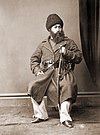 | 1825 Kabul | 21 lutego 1879 Kabul | 9 czerwca 1863 | 1866 | Dost Mohammad Chan Bibi Khadija Begum |
| 10 | Mohammad Afzal Chan |  | 1811 | 7 października 1867 | 1865 | 7 października 1867 | Dost Mohammad Chan Bibi Khadija Begum |
| (9) | Szer Ali Chan |  | 1825 Kabul | 21 lutego 1879 Kabul | 7 października 1867 | 21 lutego 1879 | Dost Mohammad Chan Bibi Khadija Begum |
| 11 | Jakub Chan | 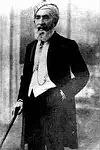 | 1849 Kabul | 15 listopada 1923 Shimla | 21 lutego 1879 | 12 października 1879 | Szer Ali Chan Maryam Begum |
| 12 | Abdur Rahman Chan | 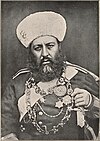 | 1840 Kabul | 1 października 1901 Kabul | 31 maja 1880 | 1 października 1901 | Mohammad Afzal Chan ? |
Emirat Afganistanu (protektorat brytyjski 1901–1926)
Dynastia Barakzai
| # | Imię | Lata życia | Czas rządów | Rodzice | |||
|---|---|---|---|---|---|---|---|
| Urodzony | Zmarł | Od | Do | ||||
| 13 | Habibullah Chan | 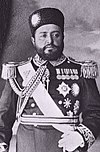 | 3 czerwca 1872 Samarkanda | 20 lutego 1919 Laghman | 1 października 1901 | 20 lutego 1919 | Abdur Rahman Chan Asal Begum |
| 14 | Amanullah Chan |  | 1 czerwca 1892 Paghman | 25 kwietnia 1960 Zurych | 28 lutego 1919 | 9 czerwca 1926 | Habibullah Chan Sarwar Sultana Begum |
Królestwo Afganistanu (1926–1973)
| # | Imię | Lata życia | Czas rządów | Rodzice | |||
|---|---|---|---|---|---|---|---|
| Urodzony | Zmarł | Od | Do | ||||
| 1 | Amanullah Chan |  | 1 czerwca 1892 Paghman | 25 kwietnia 1960 Zurych | 9 czerwca 1926 | 14 stycznia 1929 Abdykował | Habibullah Chan Sarwar Sultana Begum |
| 2 | Inajatullah Chan |  | 20 października 1888 Kabul | 12 sierpnia 1946 Teheran | 14 stycznia 1929 | 17 stycznia 1929 Abdykował | Habibullah Chan Sarwar Sultana Begum |
Król samozwańczy
| # | Imię | Lata życia | Czas rządów | Rodzice | |||
|---|---|---|---|---|---|---|---|
| Urodzony | Zmarł | Od | Do | ||||
| 1 | Habibullah Kalakani | 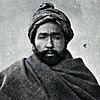 | 1890 Kalakan | 1 listopada 1929 Kabul | 17 stycznia 1929 | 17 października 1929 Abdykował | Aminullah Kalakani ? |
Dynastia Barakzai (przywrócona)
| # | Imię | Lata życia | Czas rządów | Rodzice | |||
|---|---|---|---|---|---|---|---|
| Urodzony | Zmarł | Od | Do | ||||
| 3 | Mohammad Nader Szah |  | 10 kwietnia 1880 Dehradun | 8 listopada 1933 Kabul | 15 października 1929 | 8 listopada 1933 | Habibullah Chan Sarwar Sultana Begum |
| 4 | Mohammad Zaher Szah | 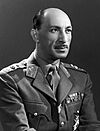 | 16 października 1914 Kabul | 23 lipca 2007 Kabul | 8 listopada 1933 | 17 lipca 1973 Abdykował | Mohammad Nader Szah Mah Parwar Begum |
Zobacz też
Media użyte na tej stronie
King Inayatullah Khan of Afghanistan
Portrait of Shaj Soojahool Moolk, head and shoulders, directed and looking very slightly to left; wearing a turban and coat; image mounted on card; after Eyre.
Lithograph with hand-colouring
King Amanullah Khan of Afghanistan
Dost Mohammad Khan, of Caubal, Emir of Afghanistan.
A contemporary painting of Ahmad Shah Durrani, founder of the modern state of Afghanistan in 1747 and ruler of the Durrani Empire. It is based on an early Afghan drawing by ’Abd al-Ghafur Breshna.[2]
The 4th ruler of the Durrani Empire (Afghan Empire)
George XI, king of Kartli, Georgia
Mohammed Nadir Khan, King of Afganistan (b.1880-d.1933)
Amir Mohammad Afzal Khan ruled Afghanistan in 1965
Shah Mahmud Hotak, son of Mirwais Khan Hotak from Kandahar in Afghanistan, defeated the Persian Empire (Shia Safavids) in early 1700s and became King of Persia in 1722.
Abdur Rahman Khan, King of Afghanistan from 1880 to 1901
Habibullah Kalakani (a.k.a. Bacha-i Saqqao, meaning son of water carrier), the Tajik bandit who seized Kabul from the faltering hands of Afghan King Amanullah Khan in January 1929. He was ousted in the same year by Nadir Khan and executed by hanging in early November 1929. [1]
Timur Shah Durrani, son of Ahmad Shah Durrani
Mohammad Yaqub Khan, Emir of Afganistan (b.1849-d.1923)
King Zahir Shah of Afghanistan
H.H. Amir Shere Ali Khan.
Photograph of Sher Ali (1825-1879) Amir of Afghanistan, 1863–79, the son of Dost Muhammad, taken in 1869 by John Burke, from the album 'The Afghan War, Attock to Jellalabad, Gandamak and Surkhab.' John Burke accompanied the Peshawar Valley Field Force, one of three British Anglo-Indian army columns deployed in the Second Afghan War (1878-80), despite being rejected for the role of official photographer. He financed his trip by advance sales of his photographs 'illustrating the advance from Attock to Jellalabad'. Coming to India as apothecary with the Royal Engineers, Burke turned professional photographer, assisting William Baker. Travelling widely in India, they were the main rivals to the better-known Bourne and Shepherd. Burke's two-year Afghan expedition produced an important visual document of the region where strategies of the Great Game were played out.
The Anglo-Russian rivalry (called the Great Game) precipitated the Second Anglo-Afghan War. Afghanistan was of strategic importance to the British in the defence of their Indian Empire, and the prevention of the spreading influence of Russia. They favoured a Forward Policy of extending India's frontiers to the Hindu Kush and gaining control over Afghanistan. In 1878 Sher Ali, who for the majority of his reign kept good terms with the British, was devastated by the death of his favourite son and his court was in disarray. The British were trying to establish a permanent mission at Kabul which Sher Ali, trying to keep a balance between the Russians and British, would not permit. The arrival of a Russian diplomatic mission in Kabul increased British suspicions of Russian influence and ultimately led to the Second Afghan War. The British undertook a three-pronged drive into Afghanistan, held the Khyber Pass and defeated the Amir's forces. Appointing his son Yakub Khan as regent, Sher Ali fled from his capital to take refuge in Russian Turkestan but died at Mazhar-e-Sharif on 21 February 1879. Yakub had to agree to the Treaty of Gandamak, whereby Afghanistan ceded to the British control of its foreign affairs, and the Khyber and Michni Passes, and allowed British representatives in Kabul and other locations.
This photograph of the Amir actually dates from 1869 from the Ambala Durbar when he first entered into negotiations with the British. Burke reused it as part of the introduction to his Afghan War catalogue.Habibullah Khan was the Emir of Afghanistan from 1901 until his assassination in 1919. He was born in Tashkent, the eldest son of the Emir Abdur Rahman Khan, whom he succeeded by right of primogeniture in October 1901.
Zaman Shah Durrani, King of Afghanistan in 1793 to 1801.
